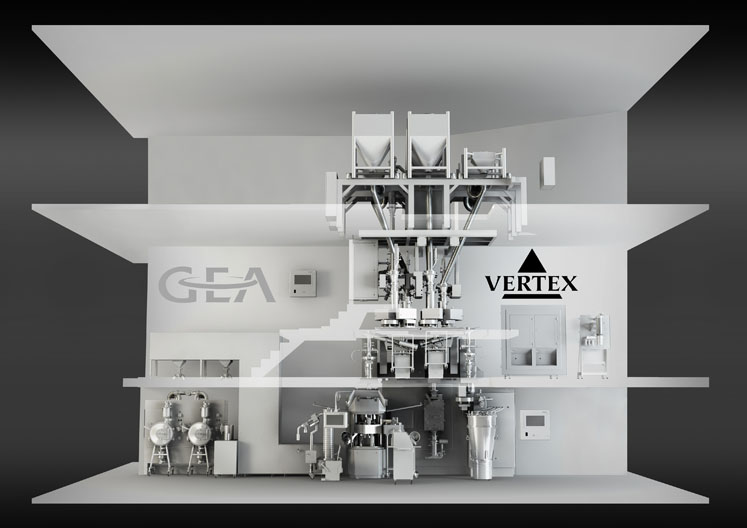Ahead of his session on Manufacturing 4.0 at CPHI Barcelona, Sean Daughtry (SD), Director of Technical Operations at Vertex Pharmaceuticals, talks to Dr Kevin Robinson (KSR) about process analytical technology (PAT) and its adoption in the pharmaceutical industry, along with the insights innovators should have when selecting manufacturing partners.
He advocates that, as an industry, we need to proactively engage more to speed adoption, which means better partnerships between regulatory bodies, academia, innovators and manufacturers.
CPHI Barcelona will be hosted at Fira Barcelona (24–26 October) and will bring the entire pharmaceutical supply chain together. The event, which is “at the heart of pharma,” is not only a platform for new business, it's also a forum for debate on future technologies and their use in pharma.
KSR: What do you believe will be the most significant PAT implementation trend in the pharmaceutical industry in the next few years?
SD: In the coming years, we can expect a noticeable shift towards the adoption of multivariate process models, which could either complement or even replace PAT.
Although I firmly support PAT for its rich data and real-time process insights, its implementation can sometimes be challenging … and this is when multivariate processes can come into play.
These models can deliver similar insights. But, what sets PAT apart, especially in its spectroscopic applications, is its ability to perform chemical testing and scrutinise the precise chemical composition of materials, whether it’s a powder, tablet or any other product.

Looking ahead, machine learning (ML) emerges as a potential game-changer. Whether through neural networks, support vector machines or similar approaches, ML holds promise.
However, it’s new and its successful integration will hinge on education, collaborative efforts with regulatory agencies to foster understanding and acceptance, and the establishment of robust safeguards and diagnostics to ensure its intended functionality.
ML also holds promise to revolutionise model development, especially when dealing with complex and non-linear data. Traditional methods such as PLS or MLR are good, but machine learning can provide equally or even more accurate models.
KSR: What developments do you foresee in the market concerning the regulatory aspects of PAT adoption?
SD: The US FDA has been actively advocating for continuous manufacturing and PAT. Notably, we’ve seen significant developments such as ICH Q13 and NIR guidance (from both the EMA and FDA) all emphasising the adoption of PAT.
It's worth highlighting that PAT offers a data-rich environment and provides a high level of product quality assurance, especially in the context of continuous manufacturing.
Several companies, including Vertex, Janssen and Lilly, have successfully filed PAT within continuous manufacturing. Additionally, many CDMOs are incorporating PAT into their existing processes, whether continuous or batch-based.
As a result, regulatory agencies seem to have grown more comfortable when reviewing, inspecting and approving PAT applications. This will hopefully spur even wider adoption if companies chose to invest in PAT.
To further facilitate collaboration with regulatory agencies and ensure broader acceptance of PAT, companies investing in this technology should engage proactively.
This can take various forms, such as meetings with scientific advisory boards, discussions with the ETT or the preparation of briefing books.
These initiatives allow companies to align with regulatory expectations, gain a clearer understanding of agency perspectives and approach the process with greater confidence.
KSR: Is there any regulatory alignment between different regulatory agencies?
SD: Generally, there is significant alignment in the regulatory landscape. Some agencies take a more hands-off approach, whereby once you’re filed, they may not extensively delve into the PAT method, including updates and changes.
Conversely, other agencies opt for a comprehensive review of these alterations and how they are handled. The overall process be more efficiently managed when a post-approval change management protocol is included in the filing.
The PACMP clearly defines what requires approval or notification or what can be handled in your quality system.
With recent guidance from both the FDA and EMA, we see a concerted effort to establish consistent governance and lifecycle management for PAT implementation.
I also know that there is increased alignment and encouragement found in the approaches of Health Canada, Australia and Swiss Medic regarding the adoption of PAT and continuous manufacturing. So, it’s all moving in the right direction.
KSR: Could you provide a prediction on a specific technology shaping the future of PAT and CM within the pharmaceutical sector?
SD: I'm seeing some noteworthy technological advancements. As you may know, near-infrared (NIR) and Raman spectroscopy are two widely utilised techniques; one notable improvement is spatially resolved NIR (SPS), known for its swift acquisition capability.
SPS enables tasks such as detecting agglomeration and even facilitating near-100% tablet inspection owing to its remarkable speed. Additionally, in the realm of NIR, high-energy transmission spectroscopy is gaining attention.

This approach boasts energy levels high enough to perform transmission scans through tablets. This is particularly beneficial because it allows for holistic tablet analysis, eliminating the potential biases associated with localised concentration variations within the tablet.
Within the domain of Raman spectroscopy, time-gated Raman is a development worth mentioning. Traditional Raman spectroscopy faces challenges with fluorescence interference, whereby certain compounds fluoresce and render Raman less effective.
However, time-gated Raman employs ultra-fast acquisition methods, leveraging picosecond lasers and single-photon avalanche diode detectors. This enables spectral data collection to occur before fluorescence does, effectively mitigating that particular issue.
These technological advances hold great promise, but the key question lies in how to seamlessly integrate them into automation … whether through online or offline applications. This integration becomes a pivotal consideration in the design of your control strategy.
In terms of continuous manufacturing, various approaches have emerged, such as wet or dry granulation and direct compression being used in series. The future trend leans toward a more modular design, allowing manufacturers to tailor elements of processes to their products for enhanced flexibility.
MC: From your perspective, what lessons can CDMOs learn from the current PAT landscape?
SD: The ideal scenario is when a business partner expresses a strong interest in embracing continuous manufacturing and is willing to collaborate on its development and implementation.
In such cases, simplicity should be a guiding principle whenever feasible. As I previously mentioned, adopting a more modular design approach can be highly effective. For instance, having a direct compression or a dry granulation unit that can be either combined or kept separate based on specific product requirements and control strategies offers flexibility.
However, it's essential to recognise that significant investments are required. You'll need to invest in building expertise, particularly in individuals who are well-versed in instrumentation, automation, and chemometrics if you’re using spectroscopic PAT.
This investment extends to lifecycle maintenance as well. Additionally, there are non-spectroscopic PAT options to consider, such as laser diffraction, physical testing or soft sensors, which generally entail a lower burden in terms of lifecycle management.

It's worth noting that some CMOs and CDMOs have already made substantial investments in continuous manufacturing capabilities. Their proactive approach and ability to attract clients are promising signs for the industry as they play a pivotal role in driving wider adoption and awareness of the benefits associated with continuous manufacturing.
KSR: Any advice for medium-sized CDMOs or smaller biotechs who have just invested in PAT?
SD: Absolutely, if you're venturing into this territory for the first time, it's a smart move to bring in a consultant or an expert who knows the ins and outs. They can guide you through the regulatory requirements and the physical set-up, especially when it comes to testing expectations.
Simplicity can be a game-changer. Take, for example, a direct compression process with NIR integrated into the feed frame. This approach tends to be more manageable, especially when tailored to a specific product.
But when you're dealing with a complex control strategy involving multiple steps, figuring out where and how to integrate PAT can be a development challenge.
For medium-sized CMOs, I wholeheartedly encourage making the investment. However, having a strategic partner who’s already well-versed in this arena can be your best bet. They bring valuable experience to the table and can help streamline the adoption process.
KSR: How does PAT influence the scalability and adaptability of processes in the context of continuous manufacturing?
SD: PAT fully enables continuous manufacturing … and CM provides for faster to market development and validation. Reflecting on Vertex’s experience with TRIKAFTA, a continuously manufactured product, it's worth noting that it became the second-fastest non-oncological medicine to transition from discovery to commercialisation.
Continuous manufacturing in the development phase allows us to work at scale without concerns about blender or bin sizes. This results in reduced API usage, efficient design of experiments and quicker time to market.
Moreover, incorporating PAT introduces a data-rich environment that ensures product quality thanks to real-time monitoring. It provides rapid feedback on process changes, allowing for flexible implementation at various stages — whether post-blending, post-granulation or within the feed frame of tablets.
This adaptability makes PAT a valuable tool to support process scalability.
One other remarkable aspect of PAT is its ability to enable real-time release testing (for dissolution, for example), effectively reducing cycle times. To establish such a test, it's essential to consider various inputs and create a successful design and innovative modelling.
Some companies, such as Vertex, have successfully ventured into this space. Furthermore, universities often offer opportunities for development partnerships in which specific applications of PAT or different manufacturing configurations can be explored.
KSR: What collaboration opportunities would you like to see to advance the adoption of PAT?
SD: I think conferences such as CPHI Barcelona serve as excellent forums for collaboration among technology providers, innovators, regulatory agencies, outsourcing partners and academia. These gatherings offer valuable insights into successful practices and the implementation of innovative approaches.
